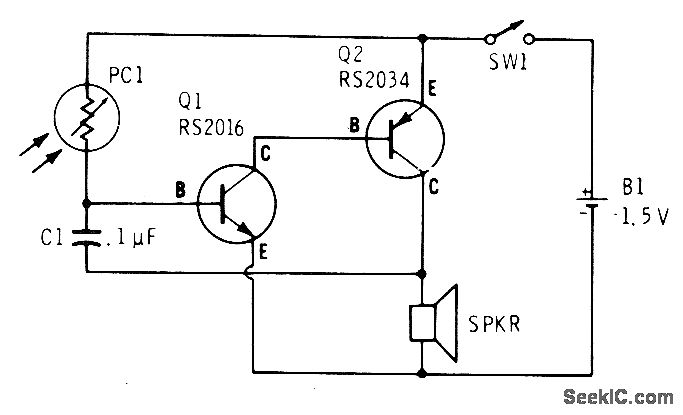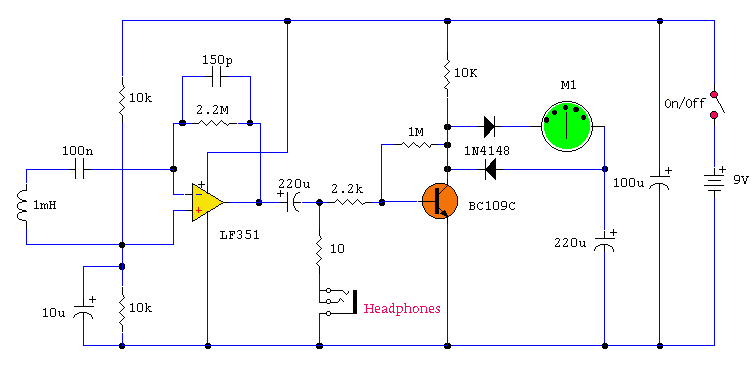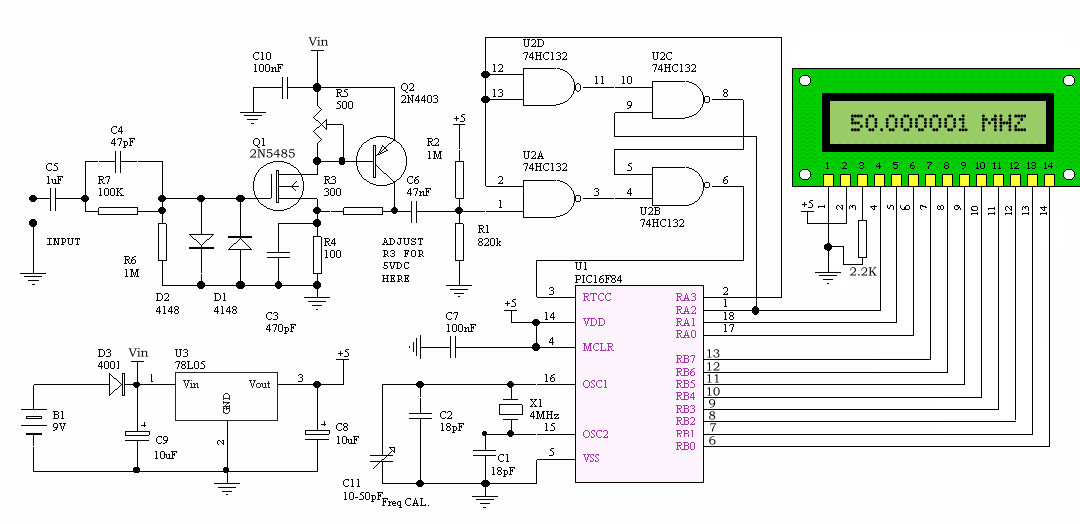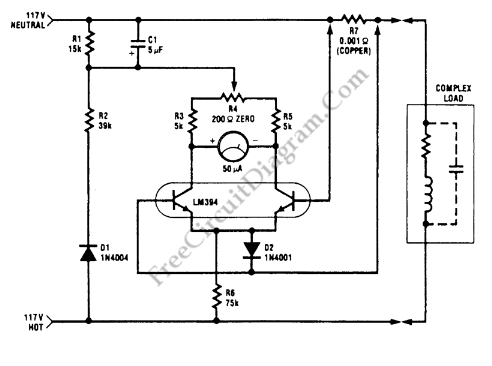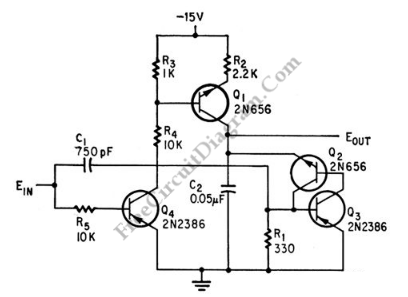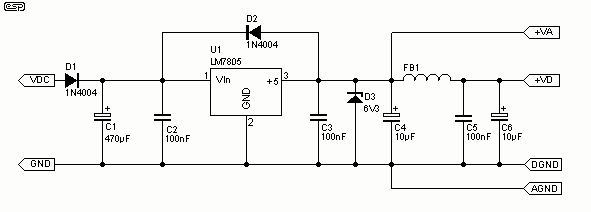
ANALOG FREQUENCY METER
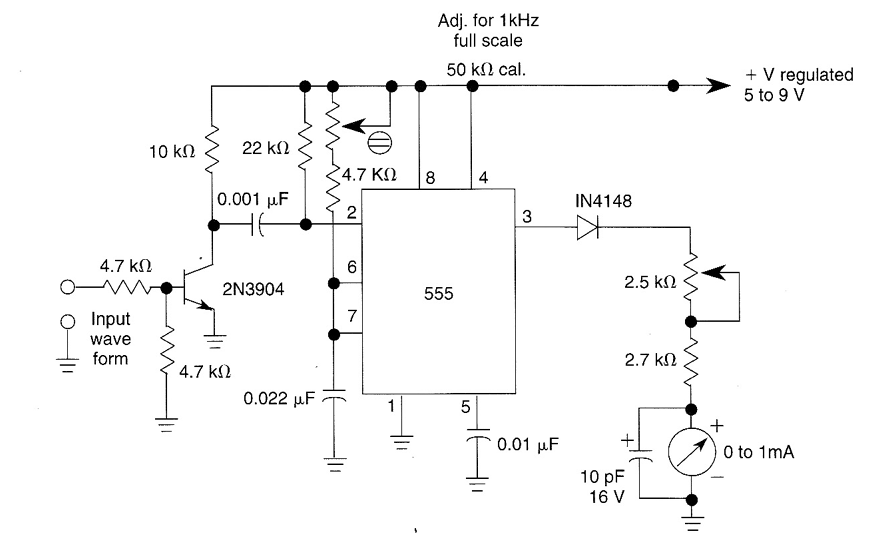
This 1 kHz linear-scale analog frequency meter circuit utilizes the 555 timer as a pulse counter. The frequency is displayed on meter M1, a 1 mA meter, which can be calibrated to indicate readings from 0 to 1 kHz.
The circuit employs a 555 timer configured in astable mode to generate a square wave output at a frequency proportional to the input frequency. The output pulse frequency from the 555 timer is fed into a counter circuit that counts the number of pulses within a specific time interval, typically one second. The counting mechanism is designed to provide a linear response, allowing the analog meter (M1) to display the frequency accurately.
For calibration, the meter can be adjusted using a variable resistor in parallel with the meter. This adjustment allows for precise scaling of the meter reading to match the input frequency range from 0 to 1 kHz. The circuit may also include filtering components to minimize noise and improve the accuracy of the frequency measurement.
In practical applications, the frequency meter can be used in various fields such as telecommunications, audio engineering, and signal processing, where measuring frequency is essential. The simplicity and effectiveness of the 555 timer in this configuration make it a popular choice for hobbyists and professionals alike in developing frequency measurement tools.This 1-kHz linear-scale analog frequency meter circuit uses the 555 as a pulse counter. Frequency is read on M1, (or 1 mA meter) which can be calibrated to read 0 to 1 kHz.. 🔗 External reference
The circuit employs a 555 timer configured in astable mode to generate a square wave output at a frequency proportional to the input frequency. The output pulse frequency from the 555 timer is fed into a counter circuit that counts the number of pulses within a specific time interval, typically one second. The counting mechanism is designed to provide a linear response, allowing the analog meter (M1) to display the frequency accurately.
For calibration, the meter can be adjusted using a variable resistor in parallel with the meter. This adjustment allows for precise scaling of the meter reading to match the input frequency range from 0 to 1 kHz. The circuit may also include filtering components to minimize noise and improve the accuracy of the frequency measurement.
In practical applications, the frequency meter can be used in various fields such as telecommunications, audio engineering, and signal processing, where measuring frequency is essential. The simplicity and effectiveness of the 555 timer in this configuration make it a popular choice for hobbyists and professionals alike in developing frequency measurement tools.This 1-kHz linear-scale analog frequency meter circuit uses the 555 as a pulse counter. Frequency is read on M1, (or 1 mA meter) which can be calibrated to read 0 to 1 kHz.. 🔗 External reference
